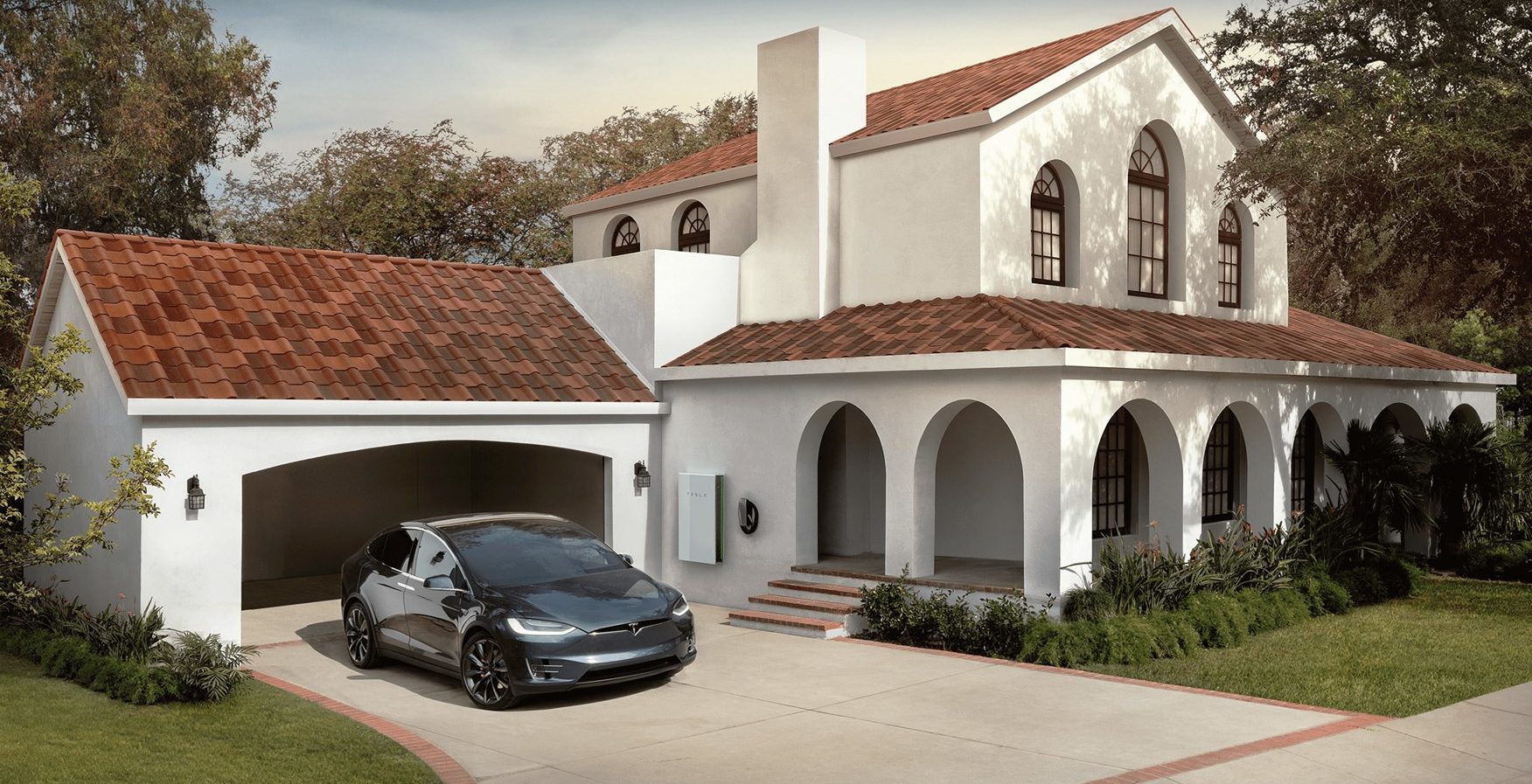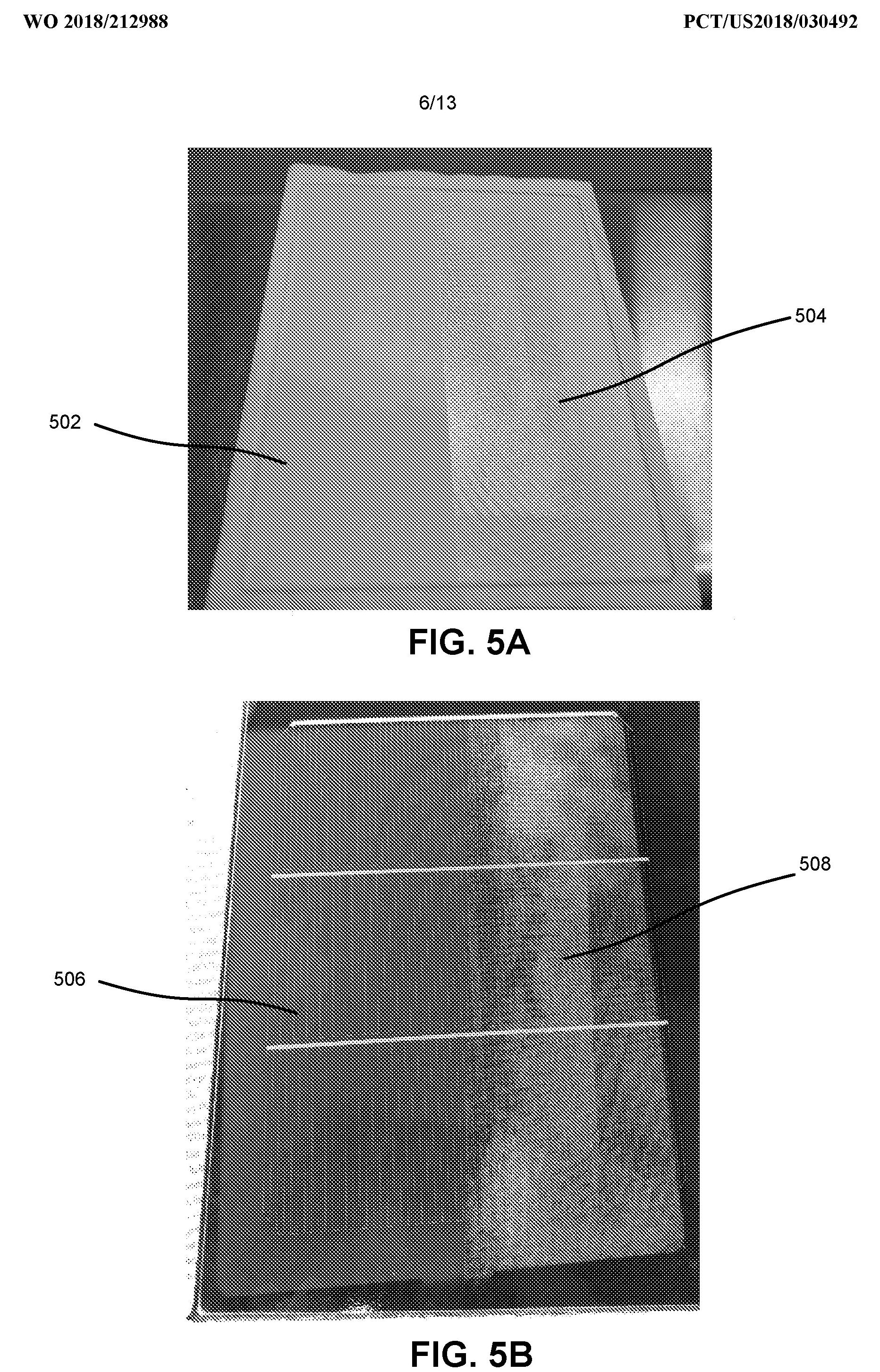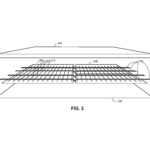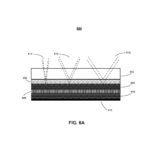

Energy
Tesla patent hints at stunning colored Solar Roof tiles with zero compromises
Elon Musk recently noted on Twitter that Tesla would be prioritizing the production of its Solar Roof tiles this coming 2019. These updates were announced not long after the company invited local media from Buffalo, NY to tour Gigafactory 2, the company’s facility which is producing the unique solar shingles. As Tesla continues to prepare for the ramp of the Solar Roof tiles next year, a recent patent has been published outlining a design that would allow the company to offer colored variants of the solar shingles without compromising any functionality.
Tesla’s recent patent, titled “Uniformly and Directionally Colored Photovoltaic Modules,” was published last Thursday. In the document’s background, Tesla noted that PV modules are usually blue, dark blue, or black because these are the natural color of solar cells. Considering that homeowners have preferences in their roofing material’s color, though, there is a need for the Solar Roof tiles to have varying shades and textures. There are currently several conventional ways to colorize PV modules, such the utilization of tinted glass and/or encapsulation sheets. That said, such systems are prone to absorbing large amounts of sunlight, which results in PV power loss. The appearance of standard colored PV modules also tends to degrade over time.
“Shading, or absorption of incident sunlight, causes PV power loss, a consequential problem of existing coloring techniques. In addition, colored PV modules manufactured with these techniques, and colored glass more generally, commonly suffer from: sparkle, or glint; flop, or angle-dependent color appearance; and graininess. Note that sparkle refers to glint or localized bright spots. Flop, on the other hand, usually refers to angle-dependent color, i.e. an angular dependence of the peak reflected wavelength. The term flop, or light-dark flop, can also refer to angle-dependent brightness, i.e. an angular dependence of total reflectivity.”
- An illustration of Tesla’s patent for its colored Solar Roof tiles. [Credit: US Patent Office]
- An illustration of Tesla’s patent for its colored Solar Roof tiles. [Credit: US Patent Office]
An illustration of Tesla’s patent for its colored Solar Roof tiles. [Credit: US Patent Office]
Tesla’s system for its colored Solar Roof tiles utilizes a rather clever system to avoid the drawbacks of conventional PV module coloration methods. Instead of using traditional solutions like tinted glass, Tesla’s design employs a texturized surface of a glass cover that has a color filter layer, as well as a “transparent material with a predetermined refractive index.” Following is Tesla’s description of its colored Solar Roof tiles’ design.
“Embodiments of the present invention can produce PV roof tiles with a uniform color with little light absorption. As a result, a high proportion of the incident light (of colors other than the module’s intended color) is transmitted to the PV cells. To facilitate uniform coloring of PV modules and roof tiles, the inside surface of a top glass cover can be texturized, and a transparent material with a predetermined refractive index or combination of refractive indices can be deposited on the texturized surface. Such a micro-textured or frosted glass cover can display significantly less sparkle, flop, and graininess than conventional glass covers, thus improving color uniformity and appearance. Customizable directional coloring, and intentionally controlled angle-dependent color, can provide further aesthetic options, while still performing efficiently for solar conversion. It is also possible to produce a layer of sphere-shaped metal nanoparticles on the inside surface of the glass cover.
“These nanoparticles can produce colors efficiently while absorbing little light. Another feature described herein is directional coloring of PV modules or roof tiles. The texturized surface of a glass cover can have a color filter layer covering one or more facets of the texture. This color filter can include multiple thin film layers formed using a directional thin film deposition technique, such as chemical or physical vapor deposition (CVD or PVD), e.g. sputtering. The coating layer can be deposited by coating the textured glass surface in one or more directions. Such directional coating can reduce unwanted light absorption by the color filter, while still providing a uniform color appearance to viewers at a certain viewing angle.”
Tesla opted to design the colored Solar Roof tiles with textured “micro-structured” glass, which feature surface roughness on the order of 100 nm to 10 μιη. This allows the colored Solar Roof tiles to display a uniform color with little light absorption and less sparkle, flop, and graininess than conventional colored glass. The colored shingles’ design also provides customizable directional and multi-directional coating, improving the aesthetics of the Solar Roof tiles themselves while still being optimized for solar conversion.
Following is a comparison of conventional colored PV modules (504 and 508) and Tesla’s coloration system (502 and 506), showing how the electric car maker’s micro-structured glass design addresses sparkle, or glare; flop, or angle-dependent coloring.

The Solar Roof tiles are Tesla’s flagship residential solar product. Designed to mimic the appearance of conventional roofing materials while offering all the advantages of solar panels, the Solar Roofs are an excellent way for homeowners to utilize a PV system without compromising the aesthetics of their home. The shingles were warmly received when they were unveiled back in 2016, though the production and installation of Solar Roof tiles are yet to ramp. Elon Musk explained the delay in the shingles’ production ramp during the third quarter earnings call.
“We’ll also start going into volume production of the solar tile roof next year. That’s quite a long development cycle for — because anything that’s roof has got to last 30 years. So even if you do accelerate life testing as fast as possible, there’s still a minimum amount of time required to do that. And there’s a lot of engineering that goes into how do you put on the solar tile roof with a — and not be really labor-intensive in doing so. So there’s a lot of engineering not just in the tile but in the way it’s done,” Musk said.
Back in July, Tesla CTO JB Straubel noted that the company is “aggressively” ramping its capacity to produce and deliver its residential solar products, stating that “No one should see us as stepping back from solar. In fact, it’s the opposite. It’s like with Model 3. People have come flooding in and are waiting on the product. So now we’re aggressively ramping our capacity.”
The full text of Tesla’s patent for its colored Solar Roof tiles could be accessed here.

Cybertruck
Tesla updates Cybertruck owners about key Powershare feature

Tesla is updating Cybertruck owners on its timeline of a massive feature that has yet to ship: Powershare with Powerwall.
Powershare is a bidirectional charging feature exclusive to Cybertruck, which allows the vehicle’s battery to act as a portable power source for homes, appliances, tools, other EVs, and more. It was announced in late 2023 as part of Tesla’s push into vehicle-to-everything energy sharing, and acting as a giant portable charger is the main advantage, as it can provide backup power during outages.
Cybertruck’s Powershare system supports both vehicle-to-load (V2L) and vehicle-to-home (V2H), making it flexible and well-rounded for a variety of applications.
However, even though the feature was promised with Cybertruck, it has yet to be shipped to vehicles. Tesla communicated with owners through email recently regarding Powershare with Powerwall, which essentially has the pickup act as an extended battery.
Powerwall discharge would be prioritized before tapping into the truck’s larger pack.
However, Tesla is still working on getting the feature out to owners, an email said:
“We’re writing to let you know that the Powershare with Powerwall feature is still in development and is now scheduled for release in mid-2026.
This new release date gives us additional time to design and test this feature, ensuring its ability to communicate and optimize energy sharing between your vehicle and many configurations and generations of Powerwall. We are also using this time to develop additional Powershare features that will help us continue to accelerate the world’s transition to sustainable energy.”
Owners have expressed some real disappointment in Tesla’s continuous delays in releasing the feature, as it was expected to be released by late 2024, but now has been pushed back several times to mid-2026, according to the email.
Foundation Series Cybertruck buyers paid extra, expecting the feature to be rolled out with their vehicle upon pickup.
Cybertruck’s Lead Engineer, Wes Morrill, even commented on the holdup:
As a Cybertruck owner who also has Powerwall, I empathize with the disappointed comments.
To their credit, the team has delivered powershare functionality to Cybertruck customers who otherwise have no backup with development of the powershare gateway. As well as those with solar…
— Wes (@wmorrill3) December 12, 2025
He said that “it turned out to be much harder than anticipated to make powershare work seamlessly with existing Powerwalls through existing wall connectors. Two grid-forming devices need to negotiate who will form and who will follow, depending on the state of charge of each, and they need to do this without a network and through multiple generations of hardware, and test and validate this process through rigorous certifications to ensure grid safety.”
It’s nice to see the transparency, but it is justified for some Cybertruck owners to feel like they’ve been bait-and-switched.
Energy
Tesla starts hiring efforts for Texas Megafactory
Tesla’s Brookshire site is expected to produce 10,000 Megapacks annually, equal to 40 gigawatt hours of energy storage.

Tesla has officially begun hiring for its new $200 million Megafactory in Brookshire, Texas, a manufacturing hub expected to employ 1,500 people by 2028. The facility, which will build Tesla’s grid-scale Megapack batteries, is part of the company’s growing energy storage footprint.
Tesla’s hiring efforts for the Texas Megafactory are hinted at by the job openings currently active on the company’s Careers website.
Tesla’s Texas Megafactory
Tesla’s Brookshire site is expected to produce 10,000 Megapacks annually, equal to 40 gigawatt hours of energy storage, similar to the Lathrop Megafactory in California. Tesla’s Careers website currently lists over 30 job openings for the site, from engineers, welders, and project managers. Each of the openings is listed for Brookshire, Texas.
The company has leased two buildings in Empire West Business Park, with over $194 million in combined property and equipment investment. Tesla’s agreement with Waller County includes a 60% property tax abatement, contingent on meeting employment benchmarks: 375 jobs by 2026, 750 by 2027, and 1,500 by 2028, as noted in a report from the Houston Business Journal. Tesla is required to employ at least 1,500 workers in the facility through the rest of the 10-year abatement period.
Tesla’s clean energy boom
City officials have stated that Tesla’s arrival marks a turning point for the Texas city, as it highlights a shift from logistics to advanced clean energy manufacturing. Ramiro Bautista from Brookshire’s economic development office, highlighted this in a comment to the Journal.
“(Tesla) has great-paying jobs. Not just that, but the advanced manufacturing (and) clean energy is coming to the area,” he said. “So it’s not just your normal logistics manufacturing. This is advanced manufacturing coming to this area, and this brings a different type of job and investment into the local economy.”
Energy
Tesla and Samsung SDI in talks over new US battery storage deal: report
The update was related by industry sources and initially reported by South Korean news outlets.

Recent reports have suggested that Tesla and Samsung SDI are in talks over a potential partnership to supply batteries for large-scale energy storage systems (ESS).
The update was related by industry sources and initially reported by South Korean news outlets.
ESS batteries to be built at Samsung’s Indiana plant
As noted in a report from Korea JoongAng Daily, the demand for energy storage systems has been growing rapidly in North America, thanks in no small part to the surge in AI investments across numerous companies. With this in mind, Tesla has reportedly approached Samsung SDI about a potential battery supply deal.
The deal is reportedly worth over 3 trillion Korean won (approximately $2.11 billion) and will span three years, according to The Korea Global Economic Daily. A battery supply deal with Samsung SDI could make sense for Tesla as the company already has a grid-scale battery, the Megapack, which is perfect for industrial use. Samsung SDI could simply supply cells for the EV maker.
Production of the batteries would reportedly take place at Samsung SDI’s joint venture factory with Stellantis in Indiana, which is currently under construction. Samsung SDI recently announced plans to use part of that plant’s EV lines to produce cells for ESS, with a targeted capacity of 30 GWh by the end of next year.
Tesla and Samsung’s partnership
At present, only a handful of manufacturers, including Korea’s LG Energy Solution, Samsung SDI, SK On, and Japan’s Panasonic, are capable of producing energy storage-scale batteries domestically in the United States. A Samsung SDI official issued a comment about the matter, stating, “Nothing has been finalized regarding cooperation with Tesla.”
The possible energy storage system deal adds another layer to Tesla’s growing collaboration with Samsung, which is already in line as a partner in the upcoming production of Tesla’s AI5 and AI6 chips. Early sample manufacturing of the AI6 is expected to begin in South Korea, with mass production slated for Samsung’s Texas-based Taylor foundry when it starts operations.
The AI6 chip will power Tesla’s next wave of high-volume projects, including the Optimus humanoid robot and the autonomous Cybercab service. Musk has called the partnership with Samsung a “real collaboration,” adding that he personally plans to “walk the line” at the Taylor facility to speed up progress.










